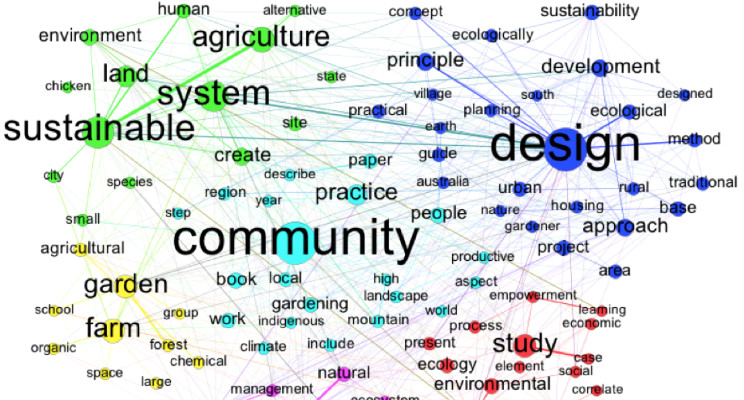|
||
An Introduction to ‘BRICKS WITHOUT STRAW’: INTRODUCTION Throughout my almost twenty-five years of field experience in construction supervision, I have experienced personal growth and success in the industry. I believe it is a direct result of my knowledge of the industry (Head), my ability to connect and relate in the working environment (Heart), and my skill set in different crafts (Hands). I refer to this as the Head/Heart/Hands Connection. Booker T. Washington, founder of Tuskegee University (my alma mater), referenced the importance of this connection in his book “Up From Slavery” more than one hundred years ago. In his book, he stressed the dignity of labor and expressed his beliefs about the head, the heart and the hands in building. He has stated, “you may fill your heads with knowledge or skillfully train your hands, but unless it is based upon high, upright character, upon a true heart, it will amount to nothing. You will be no better than the most ignorant.” I have always recognized the importance of placing priority on interpersonal cohesion as I sought to develop myself in my career. Unfortunately, in the construction industry the heart is not a focus. Still, the heart is as vital to cohesion and productivity in construction as straw is in mud built structures. Recent studies confirm that failure to prioritize the way construction professionals connect to one another and their working environment has negatively affected the industry. THE DIFFERENCE THE HEART MAKES Indigenous people groups often have words or phrases to describe the cohesive relationships between people that are functioning in a community together and relying on one another for productivity. The Mayans referenced in-lak'ech meaning ‘you are my other me’. A philosophy that I have found useful as I have sought to build sustainable construction networks is the African philosophy of "Ubuntu." Ubuntu is an isiZulu word that represents a symbiotic relationship between people and their livelihoods within their local ecosystem. It says 'I am because we are.’ My co-workers often comment about me being too much of a ‘nice guy’ in the industry. They also remind me of the common belief that ‘nice guys finish last.’ However, the upward trajectory of my career has contradicted this belief. My emphasis on the heart in construction has made the difference in the effectiveness of my work. I assert that an emphasis on modern mindsets has overshadowed the contributions of the collective mindset of indigenous systems that acknowledge our connectedness and need for cohesion. These modern mindsets are more individualistic and often hinder the growth potential of the construction industry. Dr. Hassan Omari Kaya, Director of the Department of Science and Technology in Indigenous Knowledge Systems (IKS) at the University of KwaZulu-Natal, describes IKS as a symbiotic relationship between people and their living environments that sustains livelihood and development. This synergistic relationship yields answers to local issues, which assists with sustainable patterns of growth that build rather than destroy. 'BRICKS WITHOUT STRAW' Considering connectedness and cohesion concept reminded me of a Biblical story about the Hebrews in Egypt. It mentions an incident requiring builders to make bricks without straw. The importance of mixing straw with clay was widely known, so not providing straw while requiring the same productivity was considered to be a punishment. Straw has long been an indigenous building material. It has been useful because of its accessibility and ability to create cohesion and strength in built structures when mixed with other components. In places throughout Africa and parts of the Americas, mud built structures, such as the Great Mosque of Djenne in Mali and the pueblos of the southwest portion of the United States, still remain intact and a vital part of their surrounding culture centuries after their construction. Skilled indigenous builders used clay, straw and other natural materials mixed with water to form bricks as a way to reinforce and promote stability within structures. Dense mud naturally drys slowly and can become brittle and crack when dry. The straw allows air to flow through the dense clay to allow quicker drying times; and adds rigidity similar to modern day reinforced mesh in concrete. Mud built structures made without straw break more easily and are unstable. Similarly, the absence of connectedness in the work environment has a negative impact on the construction industry. Construction professionals can begin to influence the industry by considering how they prioritize and execute the head, the heart and the hands in their work. AN UNSUSTAINABLE CONSTRUCT I have spent years observing the construction industry’s approach toward solving problems that the industry itself created. The solutions are often reactive and the problems generally stem from operating within the confines of an individualized mindset. This way of thinking has negatively influenced leadership in the construction industry and the emerging workforce. I have had first hand experiences with this way of thinking while working with ownership representatives, management teams and craft-persons. Many have a great deal of knowledge and skills in their area of discipline. However, their mindfulness of other working professionals along with the overall project objective comes second to managing their own individual tasks and risks. This is detrimental to the construction industry. The construction industry has faltered and has only averaged one percent growth over the past two decades. Some of the causes have been linked to an isolated focus of meeting individual company needs, schedules and cost targets. A recent February 2017 study by theMcKinsey Global Institute affirmed the decreased global rate of labor and production in construction. Factors such as underinvestment in skill development (both soft & hard skills) and research have hampered the growth of the construction industry. The research goes on to mention elements that would assist with the industry’s rebound such as careful planning between disciplines along with integrative planning tools that could reduce waste and increase profits. I believe all of these factors could be positively influenced by also incorporating a Head/Heart/Hands Connection. This connection not only includes the application of knowledge (head) and skills (hand), but also effectively executes interpersonal cohesion (heart) between professionals and their working environment. Building and maintaining this connection acknowledges the importance of integrating the modern advancements and technologies in construction with the indigenous systems that have sustained societies since the beginning of recorded history. CONCLUSION In building, straw reinforces structures; and among professionals it represents the heart, which is the cohesion between professionals and their working environments. In the construction industry, placing more focus on how the head, heart, and hands connection will positively influence productivity, assist with the reduction of waste, which in turn will increase profits. For those aspiring to do their part to make the construction industry more sustainable, I have this advice:
About the Author: Eugene Mason III is a construction superintendent with Power Construction in the greater Chicagoland area. He has spent part of his career as a small business owner of a remodeling company and has almost 25 years of field experience in the construction industry. He has a Bachelor Architecture and an MBA in Sustainable Business in Green Development. Eugene is the Managing Director of Harmonic Connections Plus, a 501c3 not-for-profit organization; and the developer of the Pre-Apprenticeship Development Program which focuses on working with teenagers to develop basic skills in construction. Eugene is currently working on creating a guide for construction professionals titled Bricks without Straw - A guide for the sustainable construction professional. |
||

